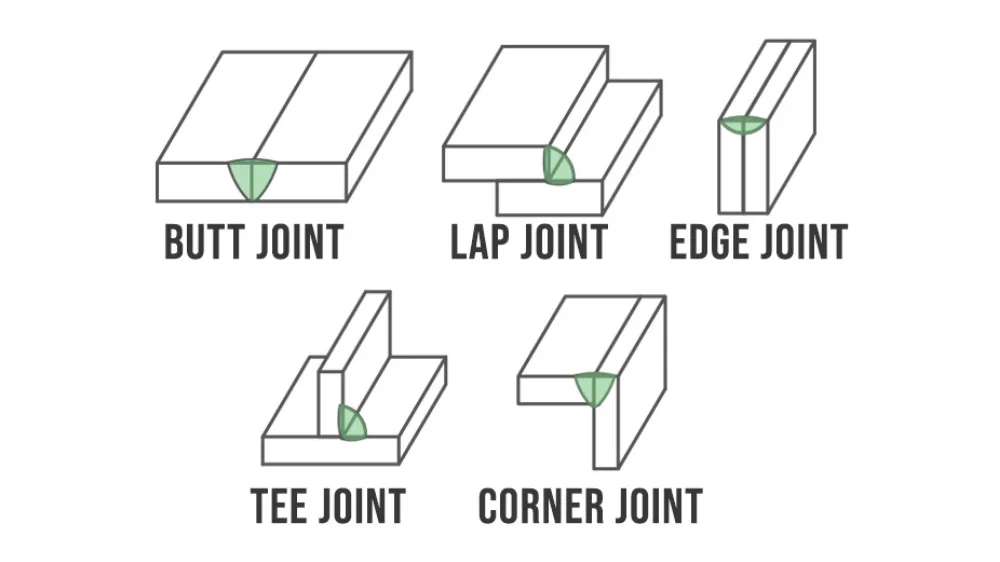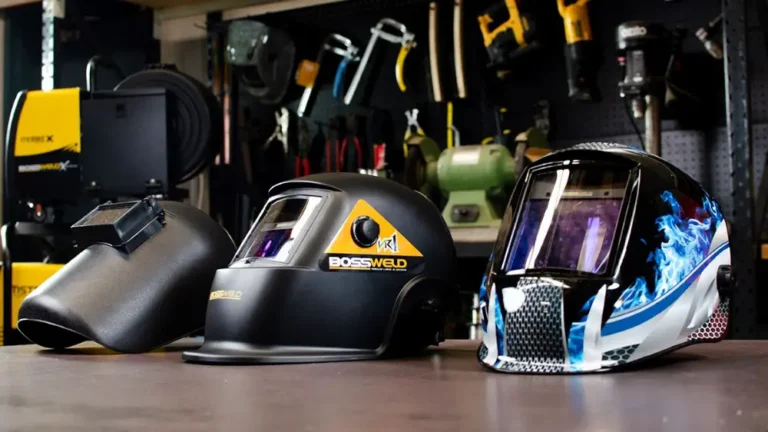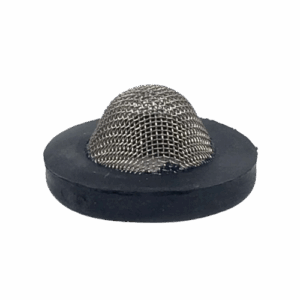“5 Basic Types of Weld Joints” The first choice you need to make for any welding project is what type of joint you will use, how two pieces of metal live exactly how smooth and permanent a weld is. Selecting the correct joint saves time, avoids weak spots, and produces professional results. In this blog, I explain the five basic types of weld joints, how they work, where they’re used, and a few tips to help you master them.
1. Butt Weld Joint – Simple Yet Powerful Connection
Every welder begins here because a butt weld is the foundation of strong fabrication. Here, I explain the types of joints and how this joint connects two flat metal edges, giving you a perfect starting point for mastering precision and strength. It’s simple, reliable, and forms the base for almost all professional welding projects.
What Is a Butt Weld Joint?
A butt joint connects two metal plates placed edge-to-edge. It’s the simplest type of joint and works great with MIG, TIG, or stick welding. Because the surfaces meet directly, it creates a clean, strong bond once fused together.
Common Uses of Butt Weld Joints
You’ll find this type of weld in pipelines, frames, and pressure vessels. It’s also used in automotive exhaust systems and sheet metal structures where precision matters most.
Tips for Strong Butt Welds
Always clean the edges before welding. Bevel thick metals slightly to get full penetration. Consistent travel speed helps you achieve smooth and even weld beads.

2. Lap Weld Joint – Reliable for Overlapping Metals
When two pieces overlap, the lap joint gives a strong and flexible hold. Here, I explain how this joint helps you join metals of different thicknesses, making it perfect for repairs, light fabrication, and applications where speed matters. It’s one of the easiest joints to control for clean and quick welding results.
What Is a Lap Weld Joint?
In this joint, one piece overlaps the other, and the weld runs along the edge where they meet. It’s easy to create and ideal for different metal thicknesses.
Common Uses of Lap Weld Joints
Lap joints are common in automotive panels, brackets, and sheet metal fabrication. They’re also used when joining coated or treated metals where full penetration isn’t needed.
Tips for Clean Lap Joints
Make sure the common area is flat and clean. Thin metal warps easily, so don’t be too hot. For a clean finish, utilize short, constant passes.

3. Corner Weld Joint – Perfect for Boxes and Frames
The corner joint is strong, neat, and ideal for making boxes, frames, and storage containers. Here, I describe how this joint creates crisp 90-degree corners that are clean and stable. This is ideal for welders who want not just functional but also a finished, clean look.
What Is a Corner Weld Joint?
An L-shaped corner where each plate meets at 90° to form a two-plate structure. This is commonly seen in tanks, boxes, and metal frames, helping give everything a hard and clean edge.
Common Uses of Corner Joints
You’ll often find this joint in furniture frames, storage containers, and industrial enclosures. It provides both strength and visual appeal.
Tips for Better Corner Joints
Check the alignment before welding. Torch angle: Keep your angle consistent, use a technique that would not cause distortion by avoiding overheating.

4. Edge Weld Joint – Smooth Finish for Light Structures
The edge joint gives a clean look where strength isn’t the top priority. Here I explain how it’s perfect for sealing, light fabrication, and thin materials. It’s often used when appearance matters most and where the welded parts don’t carry heavy loads.
What Is an Edge Weld Joint?
Two parallel plates are used, but they are glued along their edges. You use this weld type for cream materials or parts, which do not bear the load much.
Common Uses of Edge Joints
They are often used in sheet metal covers, tanks, and casings to create a sealed edge or smooth finish.
Tips for Perfect Edge Joints
Use low heat and steady travel speed. Overheating can melt through thin metal sheets. Keeping the edges even ensures a tidy weld line.

5. T-Weld Joint – Strong Support for Structures
When two plates meet at a right angle, forming a “T,” the T-joint delivers power and balance. Here I explain why it’s a trusted choice for heavy-duty fabrication, where strength and stability are key. It’s widely used in frames, machinery, and construction work that demands lasting support.
What Is a T-Weld Joint?
A T-joint connects one metal plate to the middle of another, creating a T shape. It’s a go-to choice for load-bearing frames and brackets.
Common Uses of T-Weld Joints
This joint is used in construction, vehicle frames, and heavy equipment. It handles vertical and horizontal stress with ease.
Tips for Solid T-Welds
Aim for deep penetration and proper fusion at the root. Keep your travel speed steady to avoid undercutting or uneven beads.

Pro Tips for Choosing the Right Weld Joint
Not every project needs the same joint. Here, I explain how choosing the right one improves your weld strength, finish, and efficiency. The key is to match the joint to your material, load requirements, and desired outcome.
1. Match the Joint to the Project
Use a T-joint or a butt-joint if your project requires load-bearing power. In the case of lighter fabrication, lap or edge joints are more effective.
2. Prepare Metals Properly
The metal pieces should be properly aligned and cleaned before welding. Rust or dirt can cause porosity and weak fusion.
3. Test Before Final Welding
So always test on a piece first for heat setting and wire feed speed. A few minutes of testing can save dozens of hours of rework.
Conclusion
Knowledge of the five major types of weld joints is fundamental to sound welding. According to the application, service load, and kind of metal, this may be a butt joint, lap joint, corner joint or edge joint, or a T-joint. Correct use of all of them is going to provide a more accurate weld, less rework, and longer-lasting clean results. Take care of every joint, the right settings are to be used, and safety is to be kept in mind. These are real practices that will lead to the basis of professional weld quality.
FAQ’s
Q1. How do you create the strongest weld?
Out of all the joints, the butt weld becomes the one with the most strength, especially if fully penetrated from both sides.
Q2. Which weld joint is best for beginners?
The lap joint is easiest to learn because it gives good visibility and control during welding.
Q3. Is there any weld joint not possible to achieve using MIG welding?
Yes, for all joint types, the voltage and feed are properly adjusted.
Q4. Joint preparation why is this so important?
Beveling the edges ensures clean penetration and prevents contamination that helps the weld remain better for a long time.



 Maxflow Water Inlet Gauze Filter
Maxflow Water Inlet Gauze Filter